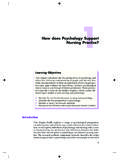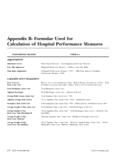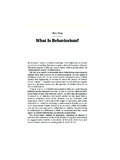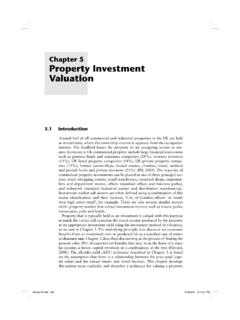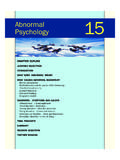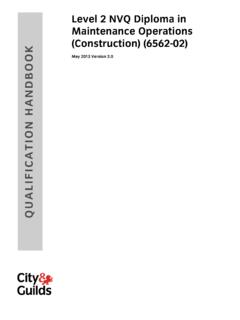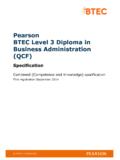Transcription of Organizational Psychology 20 - Wiley-Blackwell
1 CHAPTER OUTLINELEARNING OBJECTIVESINTRODUCTIONINDIVIDUALS AT WORKM atching the person to the jobFitting into the organizationTraining does it work?Leadership stylesJob satisfactionStress at workGROUPS AT WORKMore than the sum of the partsGroup decision makingORGANIZATIONS AT WORKO rganizational designOrganizational culturePower and politicsREDUNDANCY AND UNEMPLOYMENTR edundancy a kind of bereavementPsychological effects of unemploymentFINAL THOUGHTSSUMMARYREVISION QUESTIONSFURTHER READINGO rganizational 1/2/05 3:53 pm Page 428 Learning ObjectivesBy the end of this chapter you should appreciate that:norganizations use a variety of techniques to ensure a fit between employees and the organization some aremore effective than others;ndesigned appropriately, training that managers provide for employees can influence how those employees performtheir jobs.
2 Nstress and employee attitudes are important in influencing performance in the workplace;nseveral person and situational factors impact on team effectiveness and group decision making;norganizational culture is important for workplace performance, and can be measured across several differentdimensions;npower is an important construct in the workplace and can be defined and measured in several different ways;nthere is evidence for discrimination against women at work;nunemployment can have serious psychological three years of reading this text, you arevery likely to enter and begin work in an organ-ization that is quite new to you. This will representa major change in your life, associated with newpatterns of behaviour, attitudes, new knowledgeand this chapter, we discover what psychologistsknow about the experience of working in an organ-ization, from starting to leaving.
3 This journeythrough the levels of work organizations and overthe lifespan of an individual s experience cancover only a relatively few topics, but in the pro-cess it should provide an insight into a rich andincreasingly important all studies in this area are conducted in the organizations themselves, from three perspectives:1. individual selection, socialization, training,leadership, job satisfaction and organiza-tional commitment, and the causes andconsequences of stress;2. group work group effectiveness and deci-sion making; and3. Organizational design and culture of theorganization, the exercise of power and theexperience of women at end by analysing the powerful effects ofredundancy and the first step is recruitment.
4 How do organ-izations achieve a fit between an individual, thejob and the organization? 1/2/05 3:53 pm Page 429430430 Organizational PsychologyReferences usually obtained from current or previousemployers, often in the final stages of the selection information requested may be specific or general biographicalinformation about thecandidate s life biodata invent-ories contain several questions, including objective ques-tions (such as professional qualifications held) and moresubjective ones (such as preferences for different job features).Work-sample tests usingsamples of the job ( contents of an in-tray for an executiveposition, or specifickinds of typing for asecretarial post). Theapplicant is given instructions and a specific amount oftime to complete the analysis making inferences about the candidate scharacteristics by examining specific features of his/herhandwriting, such as slant and letter centres a com-bination of some ofthe above are usuallyprocessed in groups,and some of the tech-niques require them tointeract ( simulatedgroup decision-making exercises).
5 Although the usefulness ofpsychometric testsin selectionhas been hotly debated bypsychologists, their validityhas been found to be relatively good (Robertson & Kinder, 1993). The drawback from the perspective of employers is that training is required for those who wish to administer andinterpret these tests. Even though the financial costs of ineffectiveselection are potentially large, organizations still rely on tech-niques such as personal references, graphology (handwritinganalysis) and even astrology. These techniques are demonstrablyand largely invalid as selection devices (Rafaeli & Klimoski, 1983).Selection methods need to have good criterion validity. This is the relationship betweenscores on the selectionmethod and scores on theultimate performance meas-ures, such as number of salesmade, commission earned or other types of outcomesrequired by the organization(Landy & Farr, 1980).
6 When we consider some of the major factors affecting individualsat work, how they are selected, socialized, developed throughtraining and affected by the behaviour of their bosses and peers,we begin to see how pervasive the effects of our work experiencecan be in our jobs we do shape us by offering us a sense of growth, commitment and satisfaction, or they can alienate us, creatingchronic feelings of anxiety and directly affecting our health andwellbeing. The influence of work in colouring every aspect of ourlives is THE PERSON TO THE JOBS election is based on the premise that there are stable individualdifferences between people, which can be identified (see chapters13 and 14), and that these differences have an impact on howeffective people are in a particular job (Robertson, 1995).
7 Not surprisingly, psychologists have been at the forefront of developing and using personnel selection methods. One of the aims of selection is to ensure a fit, a good match, betweenthe person and the organization. Failure to achieve this can notonly result in poor job performance, but the well being of theemployee also suffers, and ultimately the employment relation-ship is likely to selection proceduresThe typical process for de-signing a selection systembegins with a job analysistoidentify the essential require-ments. This information isused to create a job descrip-tion, which forms the basis of a person specification. Thisspecification translates the demands of the job into human termsand lists criteria that an applicant must satisfy if they are to per-form the job successfully (Arnold, Robertson & Cooper, 1991).
8 Selection methods determine whether the applicant s skills,knowledge and abilities meet these criteria. For example, if theperson specification states that good verbal reasoning skills arerequired, a psychological test of verbal reasoning may well beused in the selection procedure. Common selection procedures(from Arnold, Robertson & Cooper 1991) are:Interviews often involving more than one interviewer. At apanel interview, the applicant will be questioned by severalinterviewers. The most important features of a job inter-view are the extent to which a pre-planned structure is fol-lowed, and the proportion of questions that are directlyrelated to the tests including tests of cognitive ability ( gen-eral intelligence, verbal ability, numerical ability)
9 And self-report measures which are designed to evaluate AT WORKjob analysis procedures for describingjobs, including the nature of the workand the relationships of the job-holderwith other peoplebiodatalife history information aboutjob candidateswork-sample testspersonnel assess-ment techniques which require theapplicant to perform tasks that areexamples of the task demands of the jobin questionassessment centres series of assess-ment exercises ( interviews, work-sample tests, group discussions) used toassess a person s potential for a jobpsychometric tests assess cognitiveand personality dimensionscriterion validity the relationshipbetween a person s scores in a selectionmethod ( job interview or intelli-gence test) and his/her scores on sub-sequent performance measures ( s rating of the person s jobperformance) 1/2/05 3:53 pm Page 430 Individuals at Work431431 Psychological tests show good criterion validity.
10 For example, one of the best predictors of job performance (for all but very simple jobs) is general intelligence (Hunter & Hunter,1984; see also chapter 13). And yet the most frequently used selection method for many jobs is the unstructured inter-view, which has poor criterion validity. Here, interviewers ask a wide variety of questions, but without planning what questions will elicit the information that best predicts job interviews, involv-ing two or more interviewersasking standard job-relatedquestions of all candidates,are much better selectionmethods, but they are rarelyused (Huffcutt & Arthur, 1994; Wiesner & Cronshaw, 1988).These interviewers are likely to ask targeted questions, such as: Have you ever been in a situation at work where a customerwas very angry about a service you had provided?




